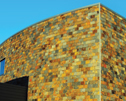Lately, NRCA has experienced an increase in reports of moisture-related problems with low-slope membrane roof systems applied to newly poured, normal-weight or lightweight structural concrete roof decks.
In the reported instances, significant amounts of water have been found within roof systems within several months to up to three years after construction. In most of the situations reported, it was determined the roof membrane was watertight and not the source of moisture infiltration. Nevertheless, NRCA has some recommendations for avoiding such problems.
Concrete decks
When mixed, poured and formed, normal-weight and lightweight structural concrete contain significant amounts of water. As concrete cures and hardens, it consumes large amounts of this water through hydration and evaporation. For example, a 4-inch-thick concrete slab will release about 1 quart of water for each square foot of surface area.
Historically, the roofing industry has used a minimum 28-day period as a guideline for applying roofing materials over newly poured concrete roof decks. The 28-day period coincides with the curing time of concrete before it is tested for design compression strength. There is little correlation between this 28-day period and concrete's true "dryness."
In some instances, a plastic sheet test has been used to determine concrete's dryness. With this test, a plastic sheet (4-mil-thick polyethylene) is taped to the concrete surface and the plastic sheet's underside is monitored for the presence of condensation.
Up to the publication of The NRCA Roofing and Waterproofing Manual, Fourth Edition in 1996, NRCA recommended the plastic sheet test as a method for determining a concrete surface's dryness.
However, with the publication of The NRCA Roofing and Waterproofing Manual, Fifth Edition in 2001 and continuing with the publication of The NRCA Roofing Manual this year, NRCA no longer considers the plastic sheet test a viable assessment of concrete's dryness.
Similar to the roofing industry, the concrete industry has seen significant advances in technology regarding concrete mix design, placement and curing.
For example, the use of concrete additives in concrete mix designs and curing compounds during concrete placement greatly can accelerate or retard concrete's curing and release of free moisture. Similarly, weather conditions, covering newly poured concrete, timing of concrete form removal, and temporary heating or ventilating of a building's interior after concrete placement can affect the rate of concrete's upward or downward release of free moisture.
For these reasons, NRCA no longer supports the 28-day drying period or plastic sheet test.
NRCA's recommendations
NRCA considers the decision of when it is appropriate to cover a newly poured concrete substrate to be beyond roofing contractors' control. Because of the numerous variables associated with concrete mix design, placement, curing and drying, roofing contractors are not privy to and may not be knowledgeable of the information necessary to make such a decision.
Also, though a roofing contractor can assess the dryness of concrete's topmost surface, he or she cannot readily assess any remaining free moisture within the concrete and its likely direction of release.
NRCA recommends the decision of when a newly poured concrete substrate is ready to be covered with a new roof system be made with the project or roof system designer, roof system manufacturer and roofing contractor. It also would be useful for designers to consult structural engineers, general contractors, concrete suppliers and concrete placement contractors who likely have more knowledge of concrete's curing and moisture-release rates.
Additional information regarding concrete roof decks is contained in The NRCA Roofing Manual: Membrane Roof Systems—2007.
Mark S. Graham is NRCA's associate executive director of technical services.



